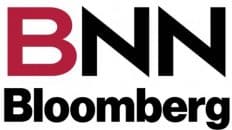If you’re in a race to a finish line, then you must be able to finish the race, right? It also really helps if you’re on the right track. But in the case of the oil race, there are two finish lines:
• The first will be in three weeks when the results of the U.S. midterms come in.
• The second is in eight weeks when winter arrives and stays for three months.
The common factor for both upcoming events the dangerously low supply of distillates, which now sit at a mere 106 million barrels, the lowest level since weekly inventory levels were first published in 1982. This low level will not only affect heating oil prices for U.S. consumers but will also crank up prices for all the goods transported by road, rail, or air.
This will inflate the inflationary balloon to its political bursting point – an event the U.S. president is trying to avoid.
It was thought that drawing crude from the Strategic Petroleum Reserve (SPR) would be a sure-fire way to increase crude inventories, which would then free up more crude to the refiners who would produce more gasoline and, presto! lower pump prices and lower consumer pressure as we head into the low demand season for gasoline.
But problem number one is that pump prices for gasoline have moved back up, not down. Distillate wholesale prices are problem number two, which are now 70 cents per litre higher than gasoline, and this is just the start of the high distillate demand season.
To calm the inflationary storm, it was announced that another 15 million barrels will be drawn from the SPR in November – this will cover just one day’s supply in the U.S.
It should be noted that the purpose of the SPR was, and still is, to protect the U.S. consumer against emergency supply disruptions. It is not there to protect political careers in an election year.
Another thought being kicked down the road is if the U.S. is exporting 3.5 million bpd of gasoline and diesel to Europe and elsewhere, why not just stop exporting and keep it for the domestic market? Surely that would lower end prices for all refined products, right?
Sorry!
If 3.5 million bpd of refinery output was discontinued, this would lower inventories because the lost demand would force refineries to close, or at best reduce production to “tick over mode,” (a term used when refiners don’t want to shut down a facility completely as it is extremely costly to restart), but just want to keep the lights on to keep ‘ticking over.’ Lower inventories would then just increase prices based on supply and demand fundamentals.
The shutdown of exports would also be a political irritant for allies in Europe who are facing winter and their own sanctions against Russian supply for crude and refined products that begins in February.
One question I get asked is, ‘why don’t refiners just produce and store more diesel to increase inventories and lower prices?’ My answer is that refineries are running at 90% capacity so there are few, if any, gears left in that engine.
Even today there is no incentive for refiners to store any diesel that is produced because diesel futures prices are in what is known as, “backwardization.” This means that current prices are higher than the futures prices so why store product at the lower price?
Instead, sell what we have at today’s higher price.
This is a race no one can win, and the finish lines keep moving.
– Roger McKnight – B.Sc., Senior Petroleum Analyst








Add comment